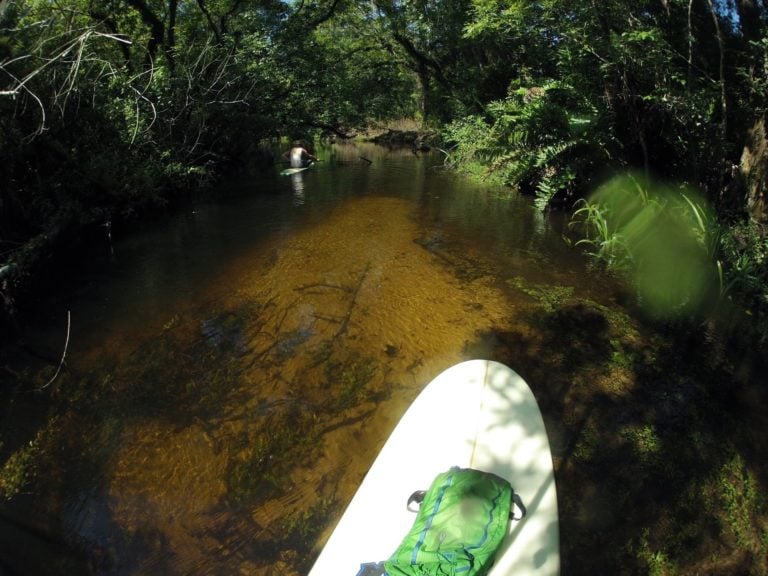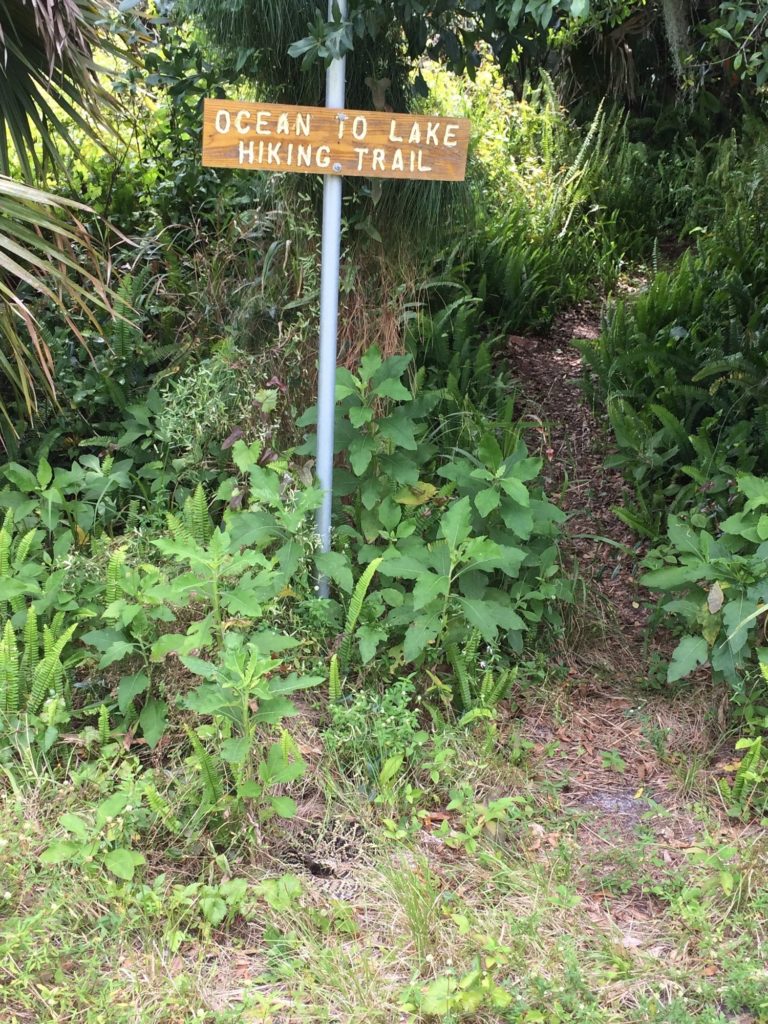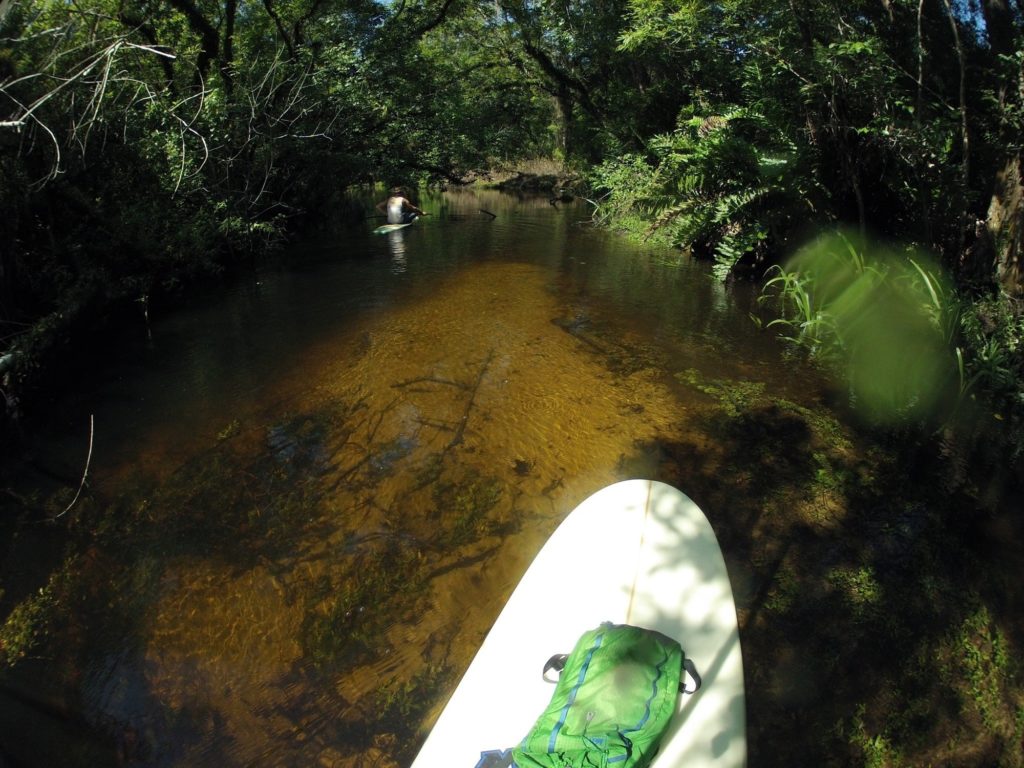
Written by Reinaldo Diaz, Lake Worth Waterkeeper
Rivers take us places and not just in the traveling sense; they are often the catalyst to a lifestyle that takes us on lifelong journeys. Luckily, some of us grew up near a National Wild and Scenic River. The Wild and Scenic Rivers Act of 1968 established a national system to preserve select free-flowing rivers in their natural condition and historic hydrology.
These rivers often set the standard for what a wild river should be. They are the focal point of our adventures, source of inspiration, and centerpiece to some of our most treasured memories.
South Florida is certainly not known to have rivers in the classic sense, but a short drive from my hometown brings us to the exception: the Northwest Fork of the Loxahatchee River. Part of the Loxahatchee River system, the Northwest Fork eventually meets the North and Southwest Forks in an embayment, before connecting to the famous Indian River Lagoon, while making its way into the Atlantic Ocean through the Jupiter Inlet. The Northwest Fork is the largest tributary and has 10.3 miles of river designated as wild and scenic.

For decades, the river dealt with saltwater intrusion. Caused by a combination of the near complete diversion of the river’s freshwater source and the permanent opening of the Jupiter Inlet in 1947 which brought tidal influences upstream, parts of the freshwater river were turned into coastal estuary. Neighbors took action, and their concern eventually led to the Northwest Fork’s designation as Florida’s first National Wild and Scenic River in 1985. The designation recognized the nationally significant unique resources and recreational opportunity that needed to be protected, and that bringing back sufficient clean freshwater was the essential first step of restoration. Since then, the Northwest Fork has undergone significant restoration and has become an escape from the surrounding urban areas.
 Starting in county-owned Riverbend Park, the Northwest Fork brings you to the closed canopy of the cypress swamp of Jonathan Dickinson State Park. Here you paddle over two small dams, the Lainhart and Masten Dams. Neighbors built these dams decades ago to create a water source. Today they are perfect spots to take a break during Florida’s hot summers—you just have to be careful to not dive onto a hiding alligator. Some of which have taken up permanent residence, like “Bubble Eye,” who friends and I have named after a scar that left bubblegum pink flesh around her eye.
Starting in county-owned Riverbend Park, the Northwest Fork brings you to the closed canopy of the cypress swamp of Jonathan Dickinson State Park. Here you paddle over two small dams, the Lainhart and Masten Dams. Neighbors built these dams decades ago to create a water source. Today they are perfect spots to take a break during Florida’s hot summers—you just have to be careful to not dive onto a hiding alligator. Some of which have taken up permanent residence, like “Bubble Eye,” who friends and I have named after a scar that left bubblegum pink flesh around her eye.
During the dry season, the river is low and we see an abundance of fish from the downstream coastal estuary. It’s not uncommon to see brackish water fish such as snook swimming along with bass and gar. Snook are usually found around mangroves or structures in the estuary, but they swim up into the river when the water level is low and the current is slow. It is perhaps the closest thing Florida has to an epic trout or salmon migration. These snook provide a surreal and challenging opportunity to fly fish in the tight bends of the cypress swamp. Your stealth ability is seriously tested with barely enough room to make a cast longer than 20 feet.
The river then takes you under side-by-side bridges of Interstate 95 and Florida’s Turnpike, a stark reminder that man’s impact reaches into the wildest places. But almost immediately after, the river takes you through a few miles of the most pristine cypress swamp in the state. A few days ago I spotted a swallow-tailed kite flying just above the canopy here. These birds roost here during the summer to fatten up before their long flight back to Brazil.
Eventually, the river brings you to the Trapper Nelson Zoo Historic District. Trapper Nelson was a legendary figure in our area’s history. He lived in this swamp making his living trapping furs and eventually built a wildlife zoo here. His rustic cabin and docks still stand and have been turned into a small museum, which is only accessible by the river.
Almost immediately after Trapper Nelson’s, the canopy disappears and the river widens. The cypress trees give way to mangroves, and the swamp becomes a coastal estuary. For the next few miles, manatees are always seen lazily grazing the grass while osprey and tarpon are on the hunt for mullet. Redfish and sheepshead are found over the grass looking for blue crabs. Luckily for us, the river is wide enough to make long casts here.

On the rare occasion that I don’t feel like paddling or fishing, the river offers loads of other opportunities with the miles of trails that run alongside it. Most notably is the Ocean to Lake Trail, a 61-mile long tail that connects Lake Okeechobee to the Atlantic Ocean and is a spur trail to the Florida National Scenic Trail. Maybe I’m a little biased, but this trail has some of the best hiking in the state. There’s never a shortage of wildlife encounters along this hike, and when it gets too hot, you can cool off in the river. Other trails will challenge the most hardened mountain bikers with flooded sections and miles of sugar sand that will push your legs to their limit. Being a Floridian who is also a climber, I’ve been known to occasionally break out my gear to climb some of the taller cypress trees, perhaps to fulfill a desperate urge between traveling to the mountains, but also as a great way to get closer to some of the hundreds of bird species that inhabit the canopy.
The Northwest Fork is where I’ve met some great friends, had some of my craziest wildlife encounters, and practiced all my outdoor pursuits. Some of my earliest childhood paddling and hiking was along this river.
The Northwest Fork is where my journey started and will forever be a part of my history. Simply put, it’s my home. And it undoubtedly inspires me to be a Waterkeeper, where its wild and scenic standard serves as the goal for what our watershed can become.